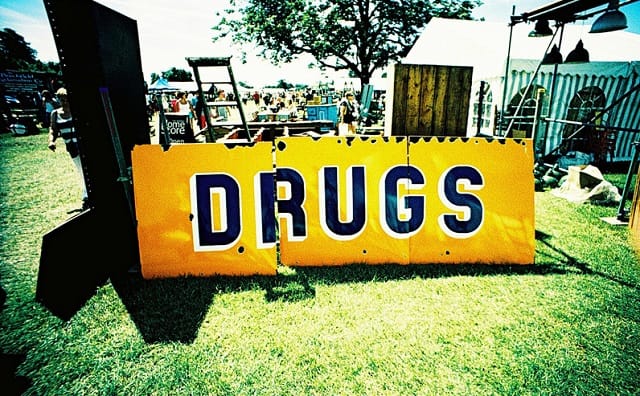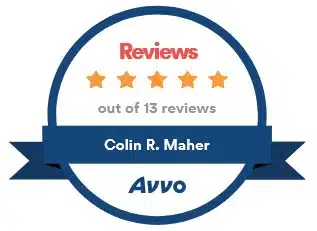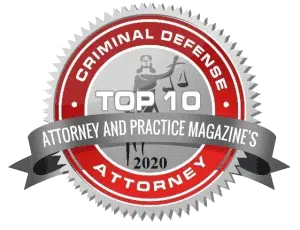
Ohio Drug Trafficking Laws: A Guide to Offense Levels and Penalties
Aggravated Drug Trafficking VS Drug Trafficking Ohio
Scroll down to review detailed descriptions of what is the difference between drug trafficking and aggravating drug trafficking in Ohio, as well the statutory penalties for trafficking in different types of drugs. Before doing that, however, take a few moments to familiarize yourself with a few basic facts that will make the details easier to understand.
What is Aggravated Trafficking
First, section 2925.03 of the Ohio Revised Code defines drug trafficking as the illegal sale, shipment, transportation, delivery distribution or preparation for distribution of drugs. When the substance involved is a Schedule I or Schedule II drug, the alleged offense is treated as aggravated trafficking.
Ohio follows the lead of the U.S. Drug Enforcement Administration in defining a Schedule I drug as one with no currently accepted medical use and a high potential for abuse. Schedule II drugs are those that have legitimate therapeutic uses but which can also be abused and lead to addiction.
Examples of Schedule I drugs are Ecstasy, heroin, LSD, and peyote. Marijuana remains a Schedule I drug, but Ohio allows some medicinal cannabis use under tight restrictions.
Schedule II drugs include cocaine, methamphetamines, Adderall, Ritalin, and a range of prescription painkillers classified as opioids. This last group of medications includes fentanyl, hydrocodone, hydromorphone, methadone and oxycodone. Familiar brand-name opioids are Dilaudid, OxyContin, and Vicodin.
Most alleged drug trafficking offenses are prosecuted as felonies. The basic drug trafficking penalty chart used by judges in Ohio looks like this:
|
Felony Class |
Jail Sentence and Max. Fine |
|
Fifth-degree (F5) |
6-12 months and $2,500 |
|
Fourth-degree (F4) |
6-18 months and $5,000 |
|
Third-degree (F3) |
9-30 months and $10,000 |
|
Second-degree (F2) |
2-8 years and $15,000 |
|
First-degree (F1) |
3-11 years and $20,000 |
Prosecutors and judges in Ohio take drug trafficking charges very seriously. They will seek and impose maximum sentences. They will also pursue multiple charges for each type of drug an alleged trafficker possesses at the time of arrest.
If you are facing a lengthy jail sentence for aggravated drug trafficking, Colin Maher of the Columbus, Ohio-based Maher Law Firm may be able to help. He has a strong track record of defending criminal suspects in the capital city and throughout Franklin County. He also offers no-cost, no-pressure phone consultations to potential clients.
You can speak to a Columbus criminal defense attorney now by calling Colin at (614) 205-2208 or by completing this online contact form.
Possible Ohio drug trafficking and aggravated drug trafficking charges:
Aggravated trafficking is a felony of the third degree if:
- Aggravated drug trafficking is committed in the vicinity of a school or juvenile
- The amount involved equals or exceeds a bulk amount but is less than 5 times bulk amount (presumption for prison term)
Aggravated trafficking is a felony of the second degree if:
- The amount involved equals or exceeds a bulk amount but is less than 5 times a bulk amount and the offense was committed in the vicinity of a school or juvenile (mandatory prison term)
- The amount involved equals or exceeds 5 times a bulk amount but is less than 50 times a bulk amount (mandatory prison term)
Aggravated trafficking is a felony of the first degree if:
- The amount involved equals or exceeds 5 times a bulk amount but is less than 50 times a bulk amount and the offense was committed within the vicinity of a school or juvenile (mandatory prison term)
- The amount involved equals or exceeds 50 times a bulk amount but is less than 100 times a bulk amount (mandatory prison term)
- The amount involved equals or exceeds 100 times a bulk amount (mandatory prison term and considered major drug offender)
If the substance is included in schedule III, IV, or V, the alleged crime is considered trafficking in drugs. Trafficking in drugs is generally a felony of the fifth degree. Certain facts will change the level of felony and, therefore, the possible penalties.
Drug Trafficking is a felony of the fourth degree if:
- It is committed in the vicinity of a school or juvenile
- The amount involved equals or exceeds a bulk amount but is less than 5 times a bulk amount
Drug Trafficking is a felony of the third degree if:
- The amount involved equals or exceeds a bulk amount but is less than 5 times a bulk amount and the offense was committed in the vicinity of a school or juvenile (presumption for prison term)
- The amount involved equals or exceeds 5 times a bulk amount but is less than 50 times a bulk amount (presumption for prison term)
Drug Trafficking is a felony of the second degree if:
- The amount involved equals or exceeds 5 times a bulk amount but is less than 50 times a bulk amount and the offense was committed within the vicinity of a school or juvenile (presumption for prison term)
- The amount involved equals or exceeds 50 times a bulk amount (mandatory prison term)
Drug Trafficking is a felony of the first degree if:
- The amount involved equals or exceeds 50 times a bulk amount and the offense was committed in the vicinity of a school or juvenile (mandatory prison term)
If the substance is marijuana, the alleged crime is considered trafficking in marijuana. Trafficking in marijuana is generally a felony of the fifth degree. Certain facts will change the level of felony and, therefore, the possible penalties.
Trafficking in marijuana is a felony of the fourth degree if:
- It is committed in the vicinity of a school or juvenile
- The amount involved equals or exceeds 200 grams but is less than 1000 grams
Trafficking in marijuana is a felony of the third degree if:
- The amount involved equals or exceeds 200 grams but is less than 1000 and the offense occurred in the vicinity of a school or juvenile
- The amount involved equals or exceeds 1000 grams but is less than 5000 grams
- The amount involved equals or exceeds 5000 grams but is less than 20,000 grams (presumption for prison term)
Trafficking in marijuana is a felony of the second degree if:
- The amount involved equals or exceeds 1000 grams but is less than 5000 grams and the offense occurred in the vicinity of a school or juvenile (presumption for prison term)
- The amount involved equals or exceeds 5000 grams but is less than 20,000 grams and the offense occurred in the vicinity of a school or juvenile (presumption for prison term)
- The amount involved equals or exceeds 20,000 grams but is less than 40,000 grams (mandatory prison term)
- The amount involved equals or exceeds 40,000 grams (mandatory maximum prison term)
Trafficking in marijuana is a felony of the first degree if:
- The amount involved equals or exceeds 20,000 grams but is less than 40,000 grams and the offense occurred in the vicinity of a school or juvenile (mandatory maximum prison term)
- The amount involved equals or exceeds 40,000 grams and the offense occurred in the vicinity of a school or juvenile (mandatory maximum prison term)
Trafficking in marijuana is a minor misdemeanor if the offense involves a gift of 20 grams or less. It is a misdemeanor of the third degree if the gift of 20 grams or less occurs within the vicinity of a school or juvenile.
If the substance is cocaine, the alleged crime is considered trafficking in cocaine. Trafficking in cocaine is generally a felony of the fifth degree. Certain facts will change the level of felony and, therefore, the possible penalties.
Trafficking in cocaine is a felony of the fourth degree if:
- The offense occurred in the vicinity of a school or juvenile
- The amount involved equals or exceeds 5 grams but is less than 10 grams
Trafficking in cocaine is a felony of the third degree if:
- The amount involved equals or exceeds 5 grams but is less than 10 grams and the offense occurred in the vicinity of a school or juvenile (presumption for prison term)
- The amount involved equals or exceeds 10 grams but is less than 20 grams (presumption for prison term)
Trafficking in cocaine is a felony of the second degree if:
- The amount involved equals or exceeds 10 grams but is less than 20 grams and the offense occurred in the vicinity of a school or juvenile (mandatory prison term)
- The amount involved equals or exceeds 20 grams but is less than 27 grams (mandatory prison term)
Trafficking in cocaine is a felony of the first degree if:
- The amount involved equals or exceeds 20 grams but is less than 27 grams and the offense occurred in the vicinity of a school or juvenile (mandatory prison term)
- The amount involved equals or exceeds 27 grams but is less than 100 grams (mandatory prison term)
- The amount involved equals or exceeds 100 grams (mandatory maximum prison term and considered major drug offender)
If the substance is LSD, the alleged crime is considered trafficking in LSD. Trafficking in LSD is generally a felony of the fifth degree. Certain facts will change the level of felony and, therefore, the possible penalties.
Trafficking in LSD is a felony of the fourth degree if:
- The offense occurred in the vicinity of a school or juvenile
- The amount involved equals or exceeds 10 unit doses but is less than 50 unit doses
- The amount involved equals or exceeds 1 gram but is less than 5 grams liquid
Trafficking in LSD is a felony of the third degree if:
- The amount involved equals or exceeds 10 unit doses but is less than 50 unit doses and the offense occurred in the vicinity of a school or juvenile (presumption for prison term)
- The amount involved equals or exceeds 1 gram but is less than 5 grams liquid and the offense occurred in the vicinity of a school or juvenile (presumption for prison term)
- The amount involved equals or exceeds 50 unit doses but is less than 250 unit doses (presumption for prison term)
- The amount involved equals or exceeds 5 grams but is less than 25 grams liquid (presumption for prison term)
Trafficking in LSD drug is a felony of the second degree if:
- The amount involved equals or exceeds 50 unit doses but is less than 250 unit doses and the offense occurred in the vicinity of a school or juvenile (mandatory prison term)
- The amount involved equals or exceeds 5 grams but is less than 25 grams liquid and the offense occurred in the vicinity of a school or juvenile (mandatory prison term)
- The amount involved equals or exceeds 250 unit doses but is less than 1000 unit doses (mandatory prison term)
- The amount involved equals or exceeds 25 grams but is less than 100 grams liquid (mandatory prison term)
Trafficking in LSD drug is a felony of the first degree if:
- The amount involved equals or exceeds 250 unit doses but is less than 1000 unit doses and the offense occurred in the vicinity of a school or juvenile (mandatory prison term)
- The amount involved equals or exceeds 25 grams but is less than 100 grams liquid and the offense occurred in the vicinity of a school or juvenile (mandatory prison term)
- The amount involved equals or exceeds 1000 unit doses but is less than 5000 unit doses (mandatory prison term)
- The amount involved equals or exceeds 100 grams but is less than 500 grams liquid (mandatory prison term)
- The amount involved equals or exceeds 5000 unit doses (mandatory maximum prison term and considered major drug offender)
- The amount involved equals or exceeds 500 grams liquid (mandatory maximum prison term and considered major drug offender)
If the substance is heroin, the alleged crime is considered trafficking in heroin. Trafficking in heroin is generally a felony of the fifth degree. Certain facts will change the level of felony and, therefore, the possible penalties.
Trafficking in heroin is a felony of the fourth degree if:
- The offense occurred in the vicinity of a school or juvenile
- The amount involved equals or exceeds 10 unit doses but is less than 50 unit doses
- The amount involved equals or exceeds one gram but is less than 5 grams
Trafficking in heroin is a felony of the third degree if:
- The amount involved equals or exceeds 10 unit doses but is less than 50 unit doses and the offense occurred in the vicinity of a school or juvenile (presumption for prison term)
- The amount involved equals or exceeds 1 gram but is less than 5 grams and the offense occurred in the vicinity of a school or juvenile (presumption for prison term)
- The amount involved equals or exceeds 50 unit doses but is less than 100 unit doses (presumption for prison term)
- The amount involved equals or exceeds 5 grams but is less than 10 grams (presumption for prison term)
Trafficking in heroin is a felony of the second degree if:
- The amount involved equals or exceeds 50 unit doses but is less than 100 unit doses and the offense occurred in the vicinity of a school or juvenile (presumption for prison term)
- The amount involved equals or exceeds 5 grams but is less than 10 grams and the offense occurred in the vicinity of a school or juvenile (presumption for prison term)
- The amount involved equals or exceeds 100 unit doses but is less than 500 unit doses (mandatory prison term)
- The amount involved equals or exceeds 10 grams but is less than 50 grams (mandatory prison term)
Trafficking in heroin is a felony of the first degree if:
- The amount involved equals or exceeds 100 unit doses but is less than 500 unit doses and the offense occurred in the vicinity of a school or juvenile (mandatory prison term)
- The amount involved equals or exceeds 10 grams but is less than 50 grams and the offense occurred in the vicinity of a school or juvenile (mandatory prison term)
- The amount involved equals or exceeds 500 unit doses but is less than 2500 unit doses (mandatory prison term)
- The amount involved equals or exceeds 50 grams but is less than 250 grams (mandatory prison term)
- The amount involved equals or exceeds 2500 unit doses (mandatory maximum prison term and considered major drug offender)
- The amount involved equals or exceeds 250 grams (mandatory maximum prison term and considered major drug offender)
If the substance is hashish, the alleged crime is considered trafficking in hashish. Trafficking in hashish is generally a felony of the fifth degree. Certain facts will change the level of felony and, therefore, the possible penalties.
Trafficking in Hashish is a felony of the fourth degree if:
- The offense occurred in the vicinity of a school or juvenile
- The amount involved equals or exceeds 10 grams but is less than 50 grams solid form
- The amount involved equals or exceeds 2 grams but is less than 10 grams liquid form
Trafficking in Hashish is a felony of the third degree if:
- The amount involved equals or exceeds 10 grams but is less than 50 grams in solid form and the offense occurred in the vicinity of a school or juvenile
- The amount involved equals or exceeds 2 grams but is less than 10 grams in liquid form and the offense occurred in the vicinity of a school or juvenile
- The amount involved equals or exceeds 50 grams but is less than 250 grams in solid form
- The amount involved equals or exceeds 10 grams but is less than 50 grams in liquid form
- The amount involved equals or exceeds 250 grams but is less than 1000 in solid form (presumption for prison term)
- The amount involved equals or exceeds 50 grams but is less than 200 grams in liquid form (presumption for prison term)
Trafficking in Hashish is a felony of the second degree if:
- The amount involved equals or exceeds 50 grams but is less than 250 grams in solid form and the offense occurred in the vicinity of a school or juvenile (presumption for prison term)
- The amount involved equals or exceeds 10 grams but is less than 50 grams in liquid form and the offense occurred in the vicinity of a school or juvenile (presumption for prison term)
- The amount involved equals or exceeds 250 grams but is less than 1000 in solid form and the offense occurred in the vicinity of a school or juvenile (presumption for prison term)
- The amount involved equals or exceeds 50 grams but is less than 200 grams in liquid form and the offense occurred in the vicinity of a school or juvenile (presumption for prison term)
- The amount involved equals or exceeds 1000 grams but is less than 2000 grams in solid form (mandatory prison term)
- The amount involved equals or exceeds 200 grams but is less than 400 grams in liquid form (mandatory prison term)
- The amount involved equals or exceeds 2000 grams in solid form (mandatory maximum prison term)
- The amount involved equals or exceeds 400 grams in liquid form (mandatory maximum prison term)
Trafficking in Hashish is a felony of the first degree if:
- The amount involved equals or exceeds 1000 grams but is less than 2000 grams in solid form and the offense occurred in the vicinity of a school or juvenile (mandatory maximum prison term)
- The amount involved equals or exceeds 200 grams but is less than 400 grams in liquid form and the offense occurred in the vicinity of a school or juvenile (mandatory maximum prison term)
- The amount involved equals or exceeds 2000 grams in solid form and the offense occurred in the vicinity of a school or juvenile (mandatory maximum prison term)
- The amount involved equals or exceeds 400 grams in liquid form and the offense occurred in the vicinity of a school or juvenile (mandatory maximum prison term)
If the substance is spice, the alleged crime is considered trafficking in spice. Trafficking in spice is generally a felony of the fifth degree. Certain facts will change the level of felony and, therefore, the possible penalties.
Trafficking in spice is a felony of the fourth degree if:
- The offense occurred in the vicinity of a school or juvenile
RECENT POSTS
-
What Happens If You Hurt Someone in a DUI?
27 May 2025
-
What is Improperly Handling Firearms in a Motor Vehicle in Ohio?
27 Mar 2025
-
What is the Difference Between OVI and DUI in Ohio?
05 Mar 2025
-
What Happens When You File a Police Report on Someone For Harassment
11 Dec 2024
-
How to Move for Dismissal for OVI in Ohio
28 Oct 2024
-
Ohio Fraud Laws: Fraud Charges and Their Penalties in Ohio
12 Sep 2024
BLOG CATEGORIES
-
Traffic
126 Posts
-
Weapons
3 Posts
-
Drugs
22 Posts
-
DUI
196 Posts
-
Current Events
1 Posts
-
Expungements
2 Posts
-
News
18 Posts
-
Criminal Defense
45 Posts


